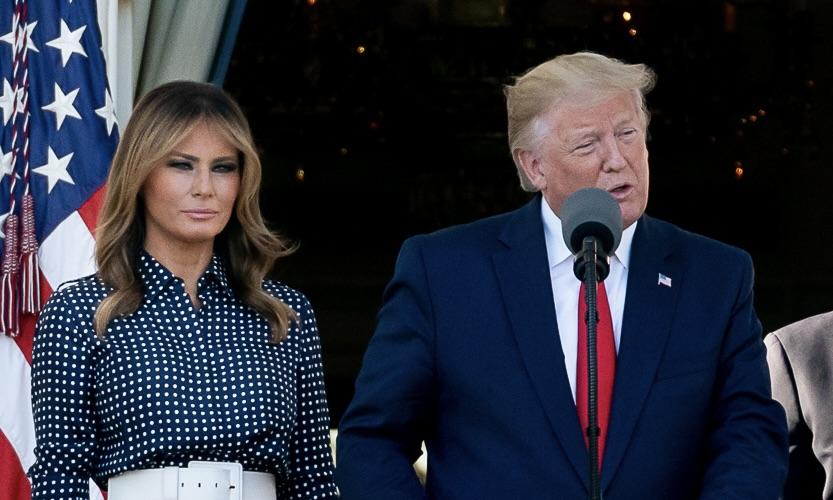As housing affordability reaches a critical tipping point in urban centers across the United States, President Donald Trump has unveiled an ambitious set of initiatives aimed at addressing the crisis in 2025. The proposed plans focus on increasing housing supply, easing zoning restrictions, and providing targeted incentives for developers. However, critics question whether these measures will genuinely benefit low-income families or primarily serve developers’ interests.
Easing Zoning Laws to Expand Housing Supply
A key component of Trump’s affordable housing strategy involves easing zoning laws, which have long been criticized for stalling urban development. The administration aims to work with local governments to remove restrictive zoning regulations that often hinder multi-family housing projects in urban areas. Trump’s team has labeled this initiative a “necessary intervention” to increase housing density and provide more affordable options for working-class Americans.
This zoning reform would prioritize streamlining the approval process for high-density projects and incentivizing municipalities to embrace mixed-use developments. By doing so, the administration hopes to foster a wave of new construction to combat the chronic shortage of affordable housing units in cities like New York, Los Angeles, and Chicago.
Critics, however, argue that this approach may lead to gentrification and displacement of long-time residents. Housing advocate @UrbanRights tweeted, “Easing zoning sounds great on paper, but will Trump’s plan safeguard against displacing vulnerable communities? Doubtful.”
Developer Incentives and Public-Private Partnerships
Another focal point of Trump’s plan is incentivizing developers to prioritize affordable housing projects through tax credits and public-private partnerships. The administration has proposed expanding the Low-Income Housing Tax Credit (LIHTC) program, which allows developers to offset the costs of building affordable units. Trump also plans to introduce a new federal grant system to support state and local affordable housing initiatives.
Supporters believe these incentives could attract private investment and drive down housing costs. Real estate expert @BuildSmart tweeted, “Finally, a housing plan that gets the private sector involved. This could be a real game-changer!” However, detractors worry that these incentives may primarily benefit large developers rather than addressing systemic issues in housing affordability. @AffordableNow commented, “Tax credits for developers? Sounds like a handout to big business, not a solution for struggling renters.”
Additionally, Trump has pledged to allocate more federal funding to the Department of Housing and Urban Development (HUD) to modernize existing public housing units and expand rental assistance programs. This aspect of the plan has received praise from some community leaders, though its long-term feasibility remains uncertain.
Public Reactions: Divided Opinions
The announcement of Trump’s housing initiatives has sparked a wave of reactions on social media. User @CityWatchdog wrote, “Trump’s zoning reforms are long overdue. Urban areas need higher density housing to meet demand.” Another commenter, @HousingHopes, countered, “Loosening zoning laws is risky—where’s the plan to protect low-income communities from being priced out?”
Meanwhile, @PolicyGuru tweeted, “Developer tax breaks are a smart move, but we need guarantees for affordable housing quotas.” Another critic, @UrbanReality, remarked, “Sounds like a classic Trump plan: big promises, but who actually benefits?”



 Barham Salih Elected as Next UN High Commissioner for Refugees
Barham Salih Elected as Next UN High Commissioner for Refugees  Argentina Unions Rally Against Milei’s Labor Reform as Congress Debates Key Bill
Argentina Unions Rally Against Milei’s Labor Reform as Congress Debates Key Bill  Republicans Raise National Security Concerns Over Intel’s Testing of China-Linked Chipmaking Tools
Republicans Raise National Security Concerns Over Intel’s Testing of China-Linked Chipmaking Tools  Fernando Haddad Confirms He Will Not Run for Office in 2025, Signals Possible Exit as Brazil’s Finance Minister
Fernando Haddad Confirms He Will Not Run for Office in 2025, Signals Possible Exit as Brazil’s Finance Minister  Trump Signals Progress in Ukraine Peace Talks Ahead of U.S.–Russia Meeting
Trump Signals Progress in Ukraine Peace Talks Ahead of U.S.–Russia Meeting  Jared Isaacman Confirmed as NASA Administrator, Becomes 15th Leader of U.S. Space Agency
Jared Isaacman Confirmed as NASA Administrator, Becomes 15th Leader of U.S. Space Agency  U.S. House Advances GOP Healthcare Bill as ACA Subsidies Near Expiration
U.S. House Advances GOP Healthcare Bill as ACA Subsidies Near Expiration  Trump Administration Proposes Sweeping Limits on Gender-Affirming Care for Children
Trump Administration Proposes Sweeping Limits on Gender-Affirming Care for Children  Putin Signals Possible Peace or Continued War in Ukraine at Major Year-End Address
Putin Signals Possible Peace or Continued War in Ukraine at Major Year-End Address  Kennedy Center Reportedly Renamed Trump-Kennedy Center After Board Vote
Kennedy Center Reportedly Renamed Trump-Kennedy Center After Board Vote  Syria, Kurds and U.S. Race to Show Progress on SDF Integration Deal
Syria, Kurds and U.S. Race to Show Progress on SDF Integration Deal  Federal Appeals Court Allows Trump’s National Guard Deployment in Washington, D.C. to Continue
Federal Appeals Court Allows Trump’s National Guard Deployment in Washington, D.C. to Continue  U.S. Initiates $11.1 Billion Arms Sale to Taiwan Amid Rising China Tensions
U.S. Initiates $11.1 Billion Arms Sale to Taiwan Amid Rising China Tensions  Italy Supreme Court Upholds Salvini Acquittal in Migrant Kidnapping Case
Italy Supreme Court Upholds Salvini Acquittal in Migrant Kidnapping Case  Trump Administration Plans Major Increase in Denaturalization Cases for Naturalized U.S. Citizens
Trump Administration Plans Major Increase in Denaturalization Cases for Naturalized U.S. Citizens  Canada Signals Delay in US Tariff Deal as Talks Shift to USMCA Review
Canada Signals Delay in US Tariff Deal as Talks Shift to USMCA Review  Union-Aligned Investors Question Amazon, Walmart and Alphabet on Trump Immigration Policies
Union-Aligned Investors Question Amazon, Walmart and Alphabet on Trump Immigration Policies 
































